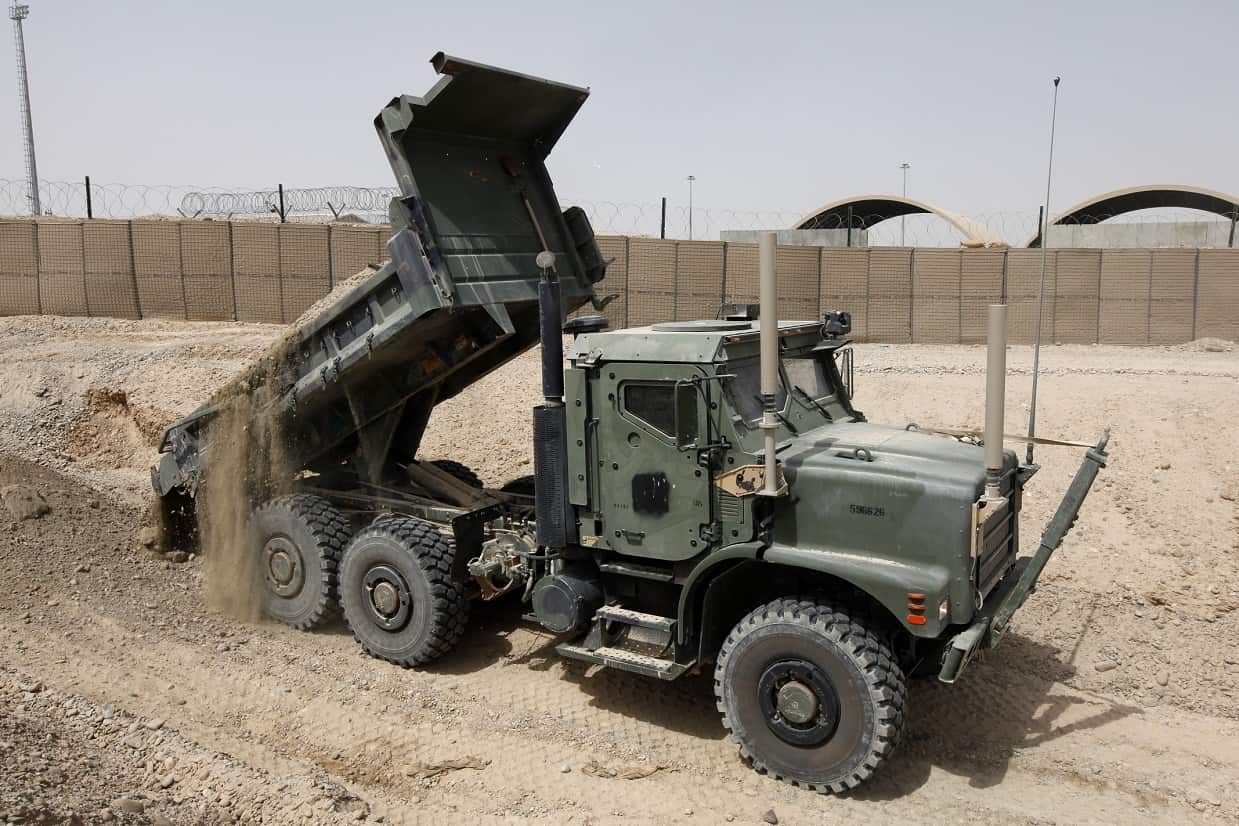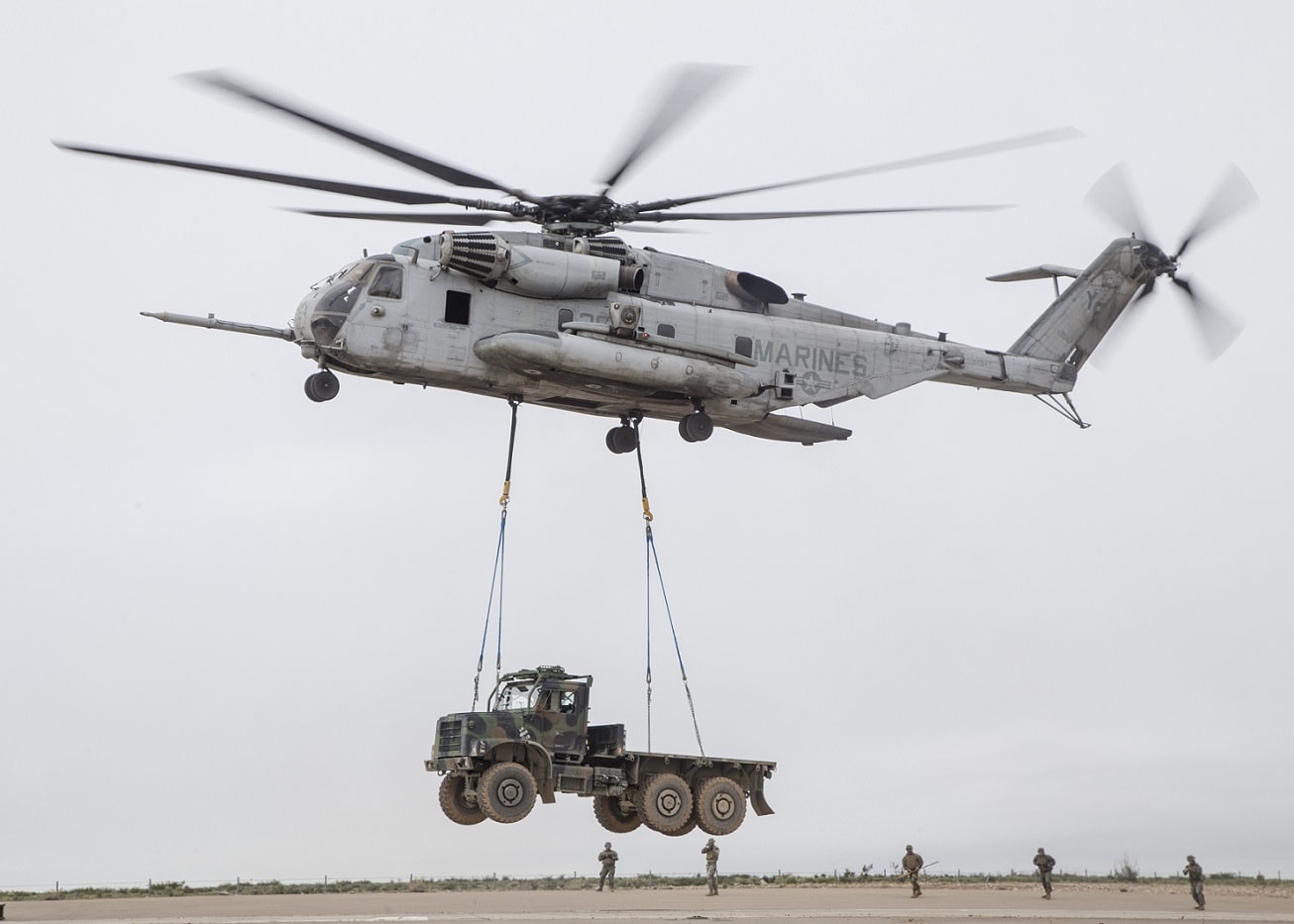U.S. Marine Corps plans to extend MTVR’s service life to 2042
Posted on
The Medium Tactical Vehicle Replacement (MTVR) of the U.S. Marine Corps provides the medium lift lifeline of any logistics operation, whether at home or in a theater.
According to a statement released by the Marine Corps Systems Command, over 1,000 MTVRs have seen service in support of Operation Iraqi Freedom, Operation Enduring Freedom, and various humanitarian and disaster relief missions across the globe. While the Corps initially planned to retire the vehicle in 2024, leadership recently decided to extend the service life of the vehicle to 2042.
“The MTVR was originally designed to have an item exit date of 2024,” said Walter Kelley, project officer for the MTVR Technology Demonstrator at Program Executive Officer Land Systems. “But being the platform that it is—a robust, good, solid performer—Marine Corps leadership decided to make it last roughly another 20 years.”
Kelley and his team at the Medium and Heavy Tactical Vehicles program office have been busy working with the National Advanced Mobility Consortium—a nation-wide alliance of organizations involved in the translational research and development of prototype, ground vehicle and robotic systems and technologies—to support this lifecycle extension.
“We’re looking at ways to improve maintainability and availability of the platform,” said Kelley. “The fewer times it needs repairs, the more available the vehicle is. All of that helps our readiness—the ability to respond when needed.”
Over the past few years, the program office has worked with NAMC on an effort that showcased the ability to increase both survivability and fuel efficiency of the MTVR by designing a lighter cab. The effort—the Lightweight Cab Initiative—outfitted the cab, where the driver sits, with removable armor and integrated a space frame architecture, further increasing passenger survivability during a rollover event. The program office also found that, by decreasing the weight of the cab, they were also able to increase the MTVR’s fuel efficiency and cut down on the logistics burden associated with refueling the vehicle in theater, thereby saving the Corps’—and taxpayers—money.
“If we can save 10 to 20 percent in fuel economy, that’s millions of dollars in fuel that could be saved with the same number of trucks going the same distances, doing the same stuff, just using less fuel,” said Kelley.

The program office reported their findings from the Lightweight Cab Initiative to Combat Development and Integration Command, the Marine Corps organization ultimately responsible for creating the requirements necessary for the acquisition team at PEO Land Systems to manage.
Currently, the MHTV team is looking for more ways to optimize sustainability and maintainability of the platform. They have turned to NAMC to modify an existing MTVR into a technology demonstrator that leverages known technologies into a single vehicle. The solutions incorporated into the vehicle will demonstrate how potential upgrades can be integrated into the existing MTVR platform.
For this effort, the MHTV team anticipates the contributions and specialties of various companies in the consortium to be combined into the final vehicle demonstrator. Specifically, the program team wants NAMC to modify an existing MTVR to integrate a lightweight modular cab with increased space for personnel and on-board equipment, more fuel-efficient powertrain, added electronic stability control, increased data bus security, and optimized occupant survivability resulting from vehicular rollover.
In addition to the proposed upgraded technologies themselves, the MHTV team will also assess how well the individual components integrate with each other.
“The purpose is [to ensure that] when individual components from different vendors are combined, the puzzle fits together,” said Trung Huynh, lead engineer for the current technology demonstrator effort at PEO Land Systems.
The demonstrator effort will be pursued over the next two years—the first year focused on industry developing the prototype, and the second year focused on the MTVR team evaluating the prototype.
“The outcome of this is getting an integrated truck, meeting the requirements of this technology demonstrator, and taking it to leadership,” said Kelley. “Leadership can then pick and choose what features will best support Marines or whether it would be worth going after a brand new truck.”
As in the case of the Lightweight Cab Initiative, the results of this effort will then be passed on to CD&I for further evaluation and potential creation of new requirements for the MHTV.
“We are doing our due diligence to do market research to determine where things are, where trends are going, and where technology is headed so we can make a truly informed decision as we move forward,” Kelley said.
d supplies, but to also serve as the primary vehicle for towing systems like the Ground/Air Task-Oriented Radar, High-Mobility Artillery Rocket System, and M777 lightweight 155mm Howitzer.
The MTVR provides the medium lift lifeline of any logistics operation, whether at home or in theater. Over 1,000 MTVRs have seen service in support of Operation Iraqi Freedom, Operation Enduring Freedom, and various humanitarian and disaster relief missions across the globe. While the Corps initially planned to retire the vehicle in 2024, leadership recently decided to extend the service life of the vehicle to 2042.
“The MTVR was originally designed to have an item exit date of 2024,” said Walter Kelley, project officer for the MTVR Technology Demonstrator at Program Executive Officer Land Systems. “But being the platform that it is—a robust, good, solid performer—Marine Corps leadership decided to make it last roughly another 20 years.”
Kelley and his team at the Medium and Heavy Tactical Vehicles program office have been busy working with the National Advanced Mobility Consortium—a nation-wide alliance of organizations involved in the translational research and development of prototype, ground vehicle and robotic systems and technologies—to support this lifecycle extension.

“We’re looking at ways to improve maintainability and availability of the platform,” said Kelley. “The fewer times it needs repairs, the more available the vehicle is. All of that helps our readiness—the ability to respond when needed.”
Over the past few years, the program office has worked with NAMC on an effort that showcased the ability to increase both survivability and fuel efficiency of the MTVR by designing a lighter cab. The effort—the Lightweight Cab Initiative—outfitted the cab, where the driver sits, with removable armor and integrated a space frame architecture, further increasing passenger survivability during a rollover event. The program office also found that, by decreasing the weight of the cab, they were also able to increase the MTVR’s fuel efficiency and cut down on the logistics burden associated with refueling the vehicle in theater, thereby saving the Corps’—and taxpayers—money.
“If we can save 10 to 20 percent in fuel economy, that’s millions of dollars in fuel that could be saved with the same number of trucks going the same distances, doing the same stuff, just using less fuel,” said Kelley.
The program office reported their findings from the Lightweight Cab Initiative to Combat Development and Integration Command, the Marine Corps organization ultimately responsible for creating the requirements necessary for the acquisition team at PEO Land Systems to manage.
Currently, the MHTV team is looking for more ways to optimize sustainability and maintainability of the platform. They have turned to NAMC to modify an existing MTVR into a technology demonstrator that leverages known technologies into a single vehicle. The solutions incorporated into the vehicle will demonstrate how potential upgrades can be integrated into the existing MTVR platform.
For this effort, the MHTV team anticipates the contributions and specialties of various companies in the consortium to be combined into the final vehicle demonstrator. Specifically, the program team wants NAMC to modify an existing MTVR to integrate a lightweight modular cab with increased space for personnel and on-board equipment, more fuel-efficient powertrain, added electronic stability control, increased data bus security, and optimized occupant survivability resulting from vehicular rollover.
In addition to the proposed upgraded technologies themselves, the MHTV team will also assess how well the individual components integrate with each other.
“The purpose is [to ensure that] when individual components from different vendors are combined, the puzzle fits together,” said Trung Huynh, lead engineer for the current technology demonstrator effort at PEO Land Systems.
The demonstrator effort will be pursued over the next two years—the first year focused on industry developing the prototype, and the second year focused on the MTVR team evaluating the prototype.
“The outcome of this is getting an integrated truck, meeting the requirements of this technology demonstrator, and taking it to leadership,” said Kelley. “Leadership can then pick and choose what features will best support Marines or whether it would be worth going after a brand new truck.”
As in the case of the Lightweight Cab Initiative, the results of this effort will then be passed on to CD&I for further evaluation and potential creation of new requirements for the MHTV.
“We are doing our due diligence to do market research to determine where things are, where trends are going, and where technology is headed so we can make a truly informed decision as we move forward,” Kelley said.
Subscribe to our newsletter
Promotions, new products and sales. Directly to your inbox.
